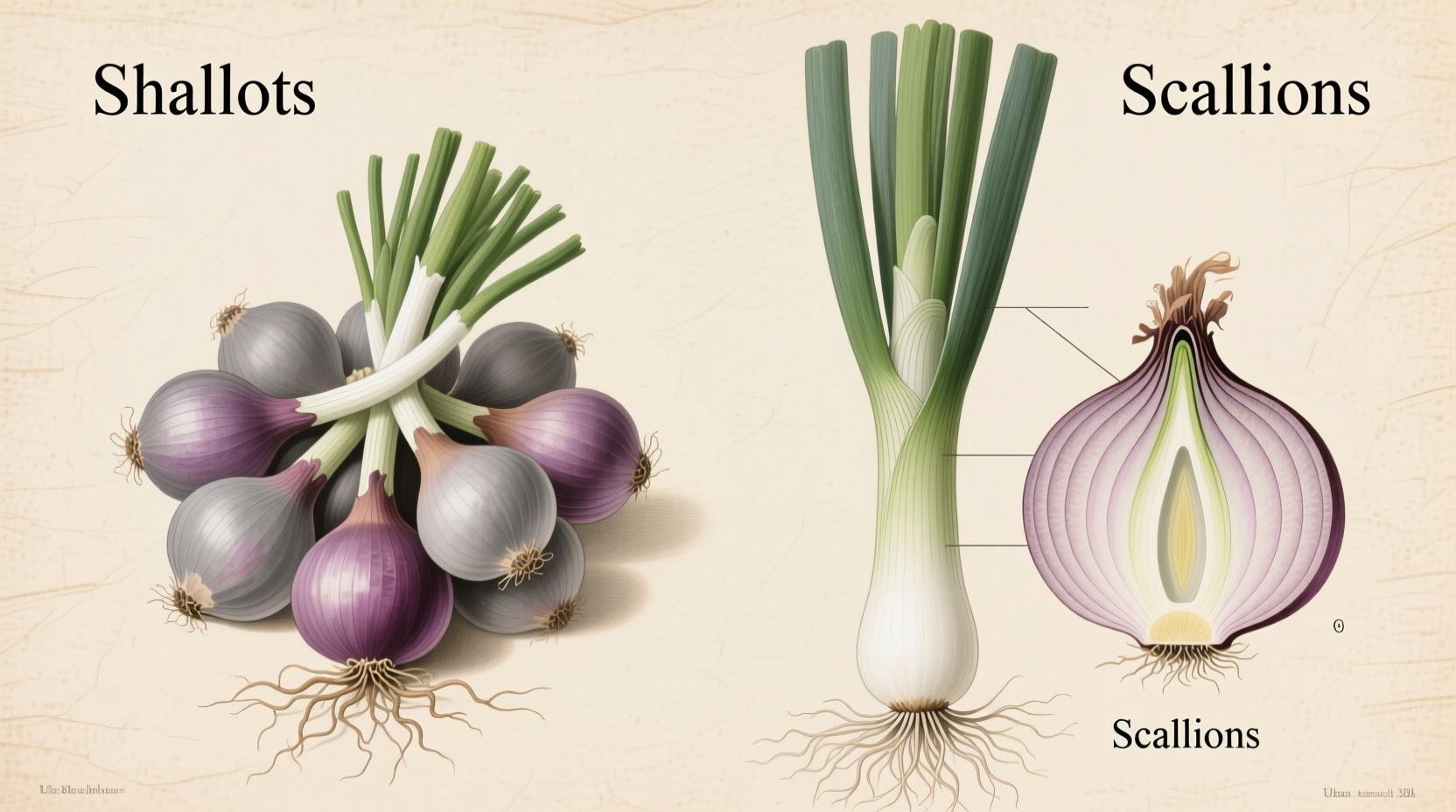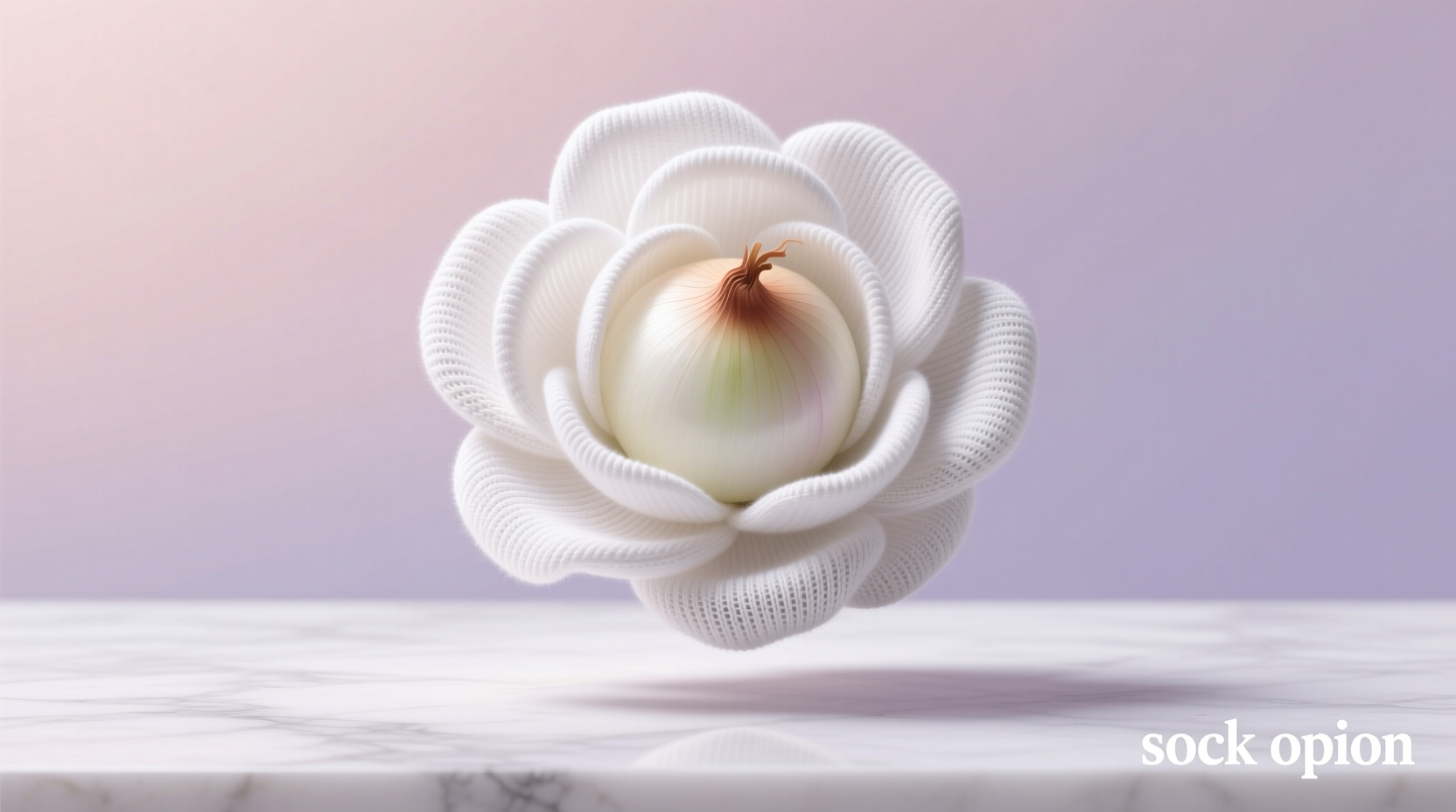Many home cooks and even experienced chefs occasionally mix up onion varieties, especially when terms sound similar. The phrase "sock onion" doesn't refer to any known onion type in culinary science, agricultural databases, or botanical references. This confusion typically stems from mishearing or misspelling either shallot (a small, elongated onion with coppery skin) or scallion (also called green onions or spring onions). Understanding these distinctions matters because using the wrong variety can dramatically alter your dish's flavor profile.
Why "Sock Onion" Isn't a Real Variety
The onion family (Allium cepa and related species) includes numerous cultivated varieties, but "sock onion" appears nowhere in agricultural databases from the USDA, university extension programs, or international botanical registries. This persistent confusion likely originates from:
- Phonetic similarity - "Shallot" pronounced quickly can sound like "shock" or "sock"
- Regional dialects - Some areas have unique local names that get misinterpreted
- Typographical errors - Common when typing quickly on mobile devices
According to the USDA Agricultural Research Service, there are six primary onion categories recognized globally, none of which include "sock" as a descriptor. This factual discrepancy represents what agricultural experts call a culinary misnomer—a term that circulates in cooking communities but lacks botanical basis.
Onion Varieties: Clearing Up the Confusion
When people search for "sock onion," they're almost always looking for information about one of two common varieties. Here's how to distinguish them:
| Characteristic | Shallots | Scallions (Green Onions) |
|---|---|---|
| Botanical Classification | Allium cepa var. aggregatum | Allium fistulosum (mostly) |
| Appearance | Elongated bulbs, coppery skin, grow in clusters | Long green stalks, small white bulbs, no bulb separation |
| Flavor Profile | Delicate, sweet, complex (garlic-onion hybrid) | Mild, fresh, grassy (stronger in white part) |
| Common Culinary Uses | Vinaigrettes, sauces, French cuisine, roasting | Garnishes, stir-fries, salads, Asian dishes |
| Storage Life | 1-2 months in cool, dry place | 3-7 days refrigerated (best used fresh) |

Shallots: The Gourmet's Onion
Shallots (often mistaken for "sock onions") represent one of the most prized members of the onion family among professional chefs. Unlike regular onions, shallots grow in clusters with elongated bulbs covered in coppery or reddish skin. Their flavor profile features a delicate balance of sweetness with subtle garlic notes, making them ideal for dishes where you want onion flavor without overpowering pungency.
According to research from Oregon State University Extension, shallots contain different sulfur compounds than common onions, resulting in their distinctive milder flavor that doesn't cause the same intense eye irritation during preparation. This biochemical difference explains why French chefs traditionally prefer shallots for delicate sauces and vinaigrettes.
Scallions: The Fresh Allium
Scallions, sometimes confused in "sock onion" searches, are actually immature onions harvested before bulb formation. Also known as green onions or spring onions, they feature long green stalks with small white bulbs at the base. Unlike shallots, scallions deliver a fresh, grassy flavor with mild heat concentrated in the white portion.
The Rutgers New Jersey Agricultural Experiment Station notes that true scallions (Allium fistulosum) differ from immature bulb onions often sold as "spring onions." This distinction matters because true scallions have hollow leaves and don't form bulbs, while spring onions are young bulb onions that will eventually develop larger bulbs if left in the ground.
Practical Selection and Usage Guide
Whether you're working with shallots or scallions, proper selection and preparation significantly impact your cooking results. Here's what professional chefs recommend:
Shopping Tips
- For shallots: Choose firm bulbs with dry, intact skin. Avoid any with green sprouts or soft spots
- For scallions: Look for crisp green tops and firm white bases. Pass on any with yellowing or slimy patches
Preparation Techniques
- Shallot peeling hack: Soak in warm water for 5 minutes to loosen skins
- Scallion storage: Wrap in damp paper towel inside airtight container for extended freshness
- Cutting methods: Slice scallions diagonally for stir-fries; mince shallots finely for dressings
Substitution Guidance
When a recipe calls for shallots but you only have regular onions (or vice versa), these ratios maintain flavor balance:
- 1 shallot = ½ small yellow onion + pinch of garlic powder
- 3 scallions = ¼ cup finely chopped red onion
- Never substitute raw shallots for scallions in garnishes—they're too strong
Historical Context: How Onion Confusion Developed
The persistent "sock onion" misunderstanding has roots in both linguistic evolution and culinary history. Onions have been cultivated for over 5,000 years, with shallots appearing in ancient Egyptian records around 2600 BCE. The term "shallot" entered English from the French "eschalote," which derived from the ancient city of Ascalon in Israel.
As global trade expanded during the 16th century, different onion varieties spread worldwide, creating regional naming inconsistencies. By the 19th century, American cookbooks frequently used "scallion" and "shallot" interchangeably, cementing the confusion that persists today. Modern food historians like those at the Food Timeline organization document how these naming inconsistencies evolved through oral culinary traditions.
Avoiding Common Onion Mistakes
Even experienced cooks make these frequent errors with shallots and scallions:
- Mistake: Using dried shallot powder as direct substitute for fresh shallots
Solution: Use ½ teaspoon powder per 1 fresh shallot, but add liquid to compensate for moisture loss - Mistake: Cooking scallion greens as long as white parts
Solution: Add green portions in last 2-3 minutes of cooking to preserve color and texture - Mistake: Storing shallots in plastic bags
Solution: Keep in mesh bags in cool, dark place with good air circulation
When Substitutions Work (and When They Don't)
Understanding context boundaries prevents culinary disasters. While shallots and scallions both belong to the Allium family, their chemical compositions create different reactions when cooked:
- Safe substitutions: Use scallions in salads when shallots aren't available (use only white parts)
- Risky substitutions: Replacing shallots with yellow onions in French sauces (creates overpowering flavor)
- Never substitute: Using raw shallots where scallions are called for as garnish (too strong)
Food science research from the Institute of Food Technologists confirms that the different sulfur compounds in each variety caramelize at distinct temperatures, explaining why substitutions sometimes work and sometimes fail completely.
Practical Application: Building Flavor Foundations
Professional chefs leverage these onions differently based on their unique properties:
- Shallots for depth: Sauté in butter until translucent for sauce bases (never brown for French cuisine)
- Scallions for freshness: Add green portions raw as finishing touch to completed dishes
- Combination technique: Use shallots in main cooking phase, then finish with scallion greens
Mastering these distinctions transforms ordinary dishes into restaurant-quality meals. The key is recognizing that while both are alliums, they serve different culinary purposes based on their chemical composition and flavor development during cooking.











 浙公网安备
33010002000092号
浙公网安备
33010002000092号 浙B2-20120091-4
浙B2-20120091-4